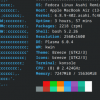KDE, Ease-of-Use, and the Year of the Linux Desktop
The recent discussions on KDE versus other Linux desktops - accidentally started by KDE-user Linus Torvalds - showed an interesting new development in the eternal debate. First of all it didn’t come as a surprise that Linus uses KDE, after all Fritz Elfert made it very clear back in 1996 that KDE stands for “Kernel-Hackers’ Desktop Environment”, when Kalle and the German IT press still pushed “Kalle Dalheimer Experience”. What came as a surprise was that the old GUI versus command line discussion against KDE, that later turned into a Free Software versus Lesser Free Software dispute, now changed shape again. The fashion of the day is: complicated power user environment versus user-friendly simplicity. And as opposed to 1997, when a vocal minority avoided us for our focus on end-users and simplicity, and went to other projects for more “Unix-guru friendliness”, themes, and features like window manager independence, they now want to deny us exactly this: simplicity and user-friendliness. Now, how bold is this? KDE’s mission has always been “ease of use, contemporary functionality, and outstanding graphical design” (kde.org), and we have succeeded delivering exactly this for the past decade. We took GNU/Linux out of the system administrator’s corner and put it on millions of desktops, an achievement that nobody can take away from us.









































































